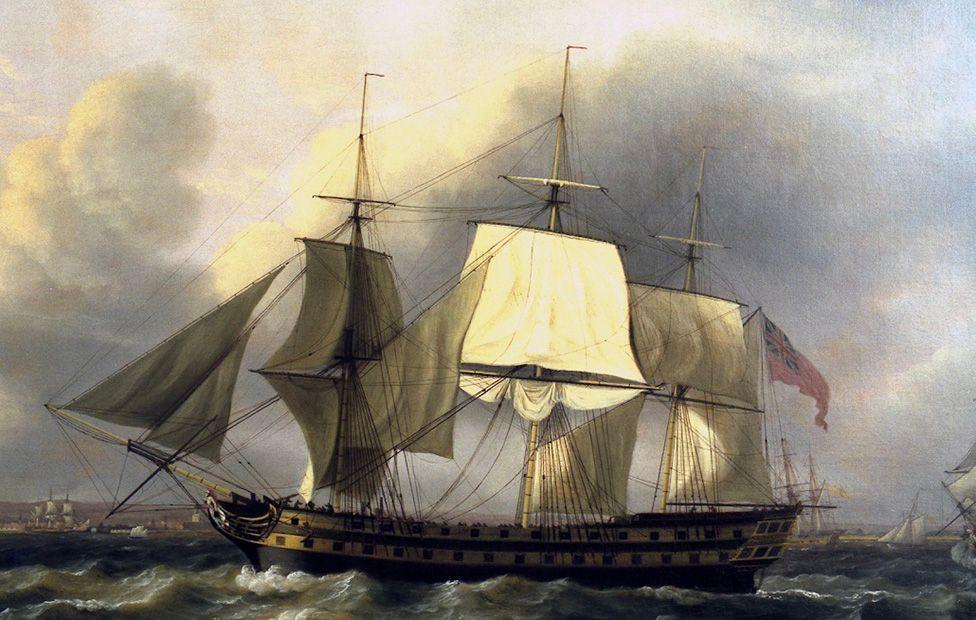Tragic shipwreck off Dorset granted special status

Thomas Luny's painting The Earl of Abergavenny
- Published
The wreck of a ship which sank more than 200 years ago has been granted special protection by the government.
The Earl of Abergavenny sank off the coast of Weymouth, Dorset, with the loss of some 250 lives, in what is considered one of the UK’s worst maritime disasters.
It was carrying more than 60 chests of silver bullion that have never been found.
John Wordsworth, the brother of renowned Romantic poet William Wordsworth, was the ship's captain.
The 1,300-tonne ship set sail from Portsmouth to Bengal and China in 1805 but during a storm it struck a sandbank and foundered about a mile off the shores of Weymouth.
On the recommendation of Historic England, the government gave the wreck special protected status on Wednesday.
This means the site, which includes planking, frames, fixtures and fittings, can be dived on but should remain untouched.
"We can’t protect shipwrecks against tides and ocean currents, but we can protect them against human activity", Duncan Wilson, Chief Executive of Historic England, told Radio 4's Today programme.
David Carter from the Portland Museum in Dorset was among those who discovered the wreck and welcomed its new protected status.
He described the Earl of Abergavenny as the "finest and largest" of the East India Company ships. The ship was built to collect tea from China, Mr Wilson said.
A mural of William Wordsworth, whose brother captained the Earl of Abergavenny
The East India Company had a close association with the Wordsworth family, with Mr Wilson telling the 91Čȱ¬ that John Wordsworth embarked on a life at sea to help support his brother's writing career.
After John Wordsworth's death, the poet's style "became a lot bleaker", the historian said.
References to John can be found in some of his brother's works, such as in The Character of the Happy Warrior, Stepping Westward and Elegiac Stanzas.
John captained two successful voyages on the Earl of Abergavenny to China before the tragic incident which took his life and that of around 250 crewmen and passengers.
"It was absolutely a national tragedy," Mr Wilson said.
The ship's cargo was estimated to be worth ÂŁ70,000 at the time - approximately ÂŁ7.5 million today.
Many of the artefacts from the wreck are housed at the Portland Museum.
Some of the artefacts recovered from the wreck site